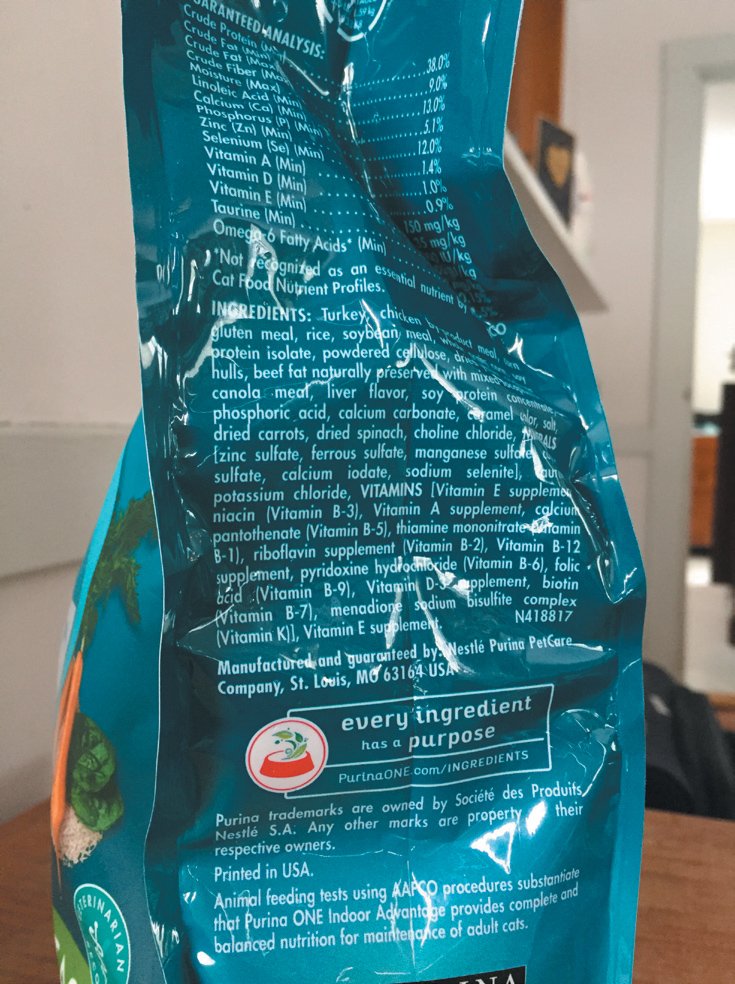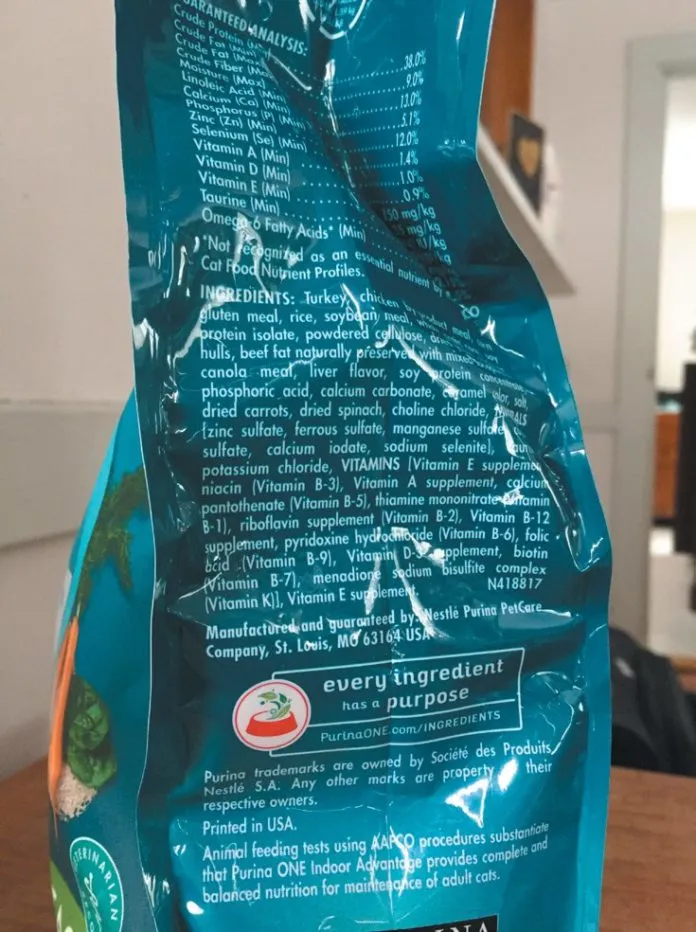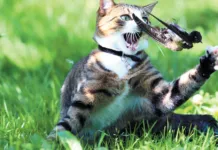
One piece of information you really need to make sure you’re choosing the right food for your pet is not on the front of a package of cat food in large letters. It’s either scrunched up in tiny print on the side or back of a bag of kibble or on a can in such tiny lettering that it can be hard to make out. It’s called the Statement of Nutritional Adequacy.
But even having a magnifying glass won’t make it easy to find. That’s because there’s not a single bag or can of cat food that has the words “Statement of Nutritional Adequacy.” So how do you find it?
Look for a sentence that contains the words “Association of American Feed Control Officials,” or “AAFCO.” That organization establishes nutrient profiles, sort of like the Dietary Reference Intakes for people, and the sentence that mentions AAFCO is the statement you’re looking for. In fact, sometimes the Statement of Nutritional Adequacy is called the AAFCO Statement (but you won’t see the heading “AAFCO Statement” either).
If the statement has the word “maintenance,” the food is right for a cat at least one year of age. If the statement contains the word “growth,” it is right for a kitten, who needs a more nutrient-dense food to support her growing body from birth through 12 months of age.
The words “for all life stages” means the food is acceptable for a cat of any age. Be aware, however, that it has actually been designed for kittens and cats who are pregnant or nursing, and thus may be higher in nutrients, and especially calories, than an adult cat needs for maintenance. That makes it less ideal overall for a non-pregnant or non-lactating cat over the age of one.
Go for a food that has been tested
Along with telling you whether a food is right for a kitten, a breeding queen, just an adult cat, or all three, the Statement of Nutritional Adequacy will indicate whether the food has actually been tested on cats using a standard protocol before being brought to market. If it says something like “formulated to meet the nutritional levels established by the AAFCO Cat Food Nutrient Profiles,” it has not — it simply meets nutrient content requirements. If, on the other hand, it has the words “animal feeding tests using AAFCO procedures,” it means the food went through a feeding trial and was actually fed to cats to see if there were problems with bioavailability of vitamins and minerals or any problematic interactions between nutrients. While feeding tests aren’t perfect, they are a better bet than simply approving the diet based on measured nutrient levels.
Note: Just because one food made by a particular brand has been through an animal feeding test, it doesn’t mean all of them have. Always check the Statement of Nutritional Adequacy, even if you’re only switching flavors.




